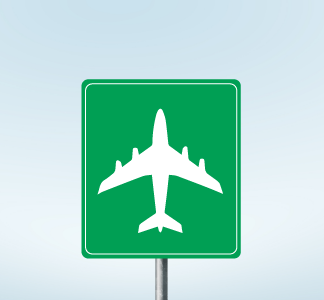Australian Road Signs: Traffic Signs and Meanings
Road signs are designed to be seen quickly and understood instantly. Australia uses a nationally consistent system, so once you learn the shapes, colours, and common symbols you can read australian road signs confidently in any state or territory. Minor differences in wording or placement can occur, but the core road signs and meanings stay the same. If you are preparing for the DKT, knowing these traffic signs helps you answer faster and drive safer.
Most signs fit three purposes:
- Regulatory signs — rules you must follow
- Warning signs — warnings about conditions ahead
- Information signs — guidance to places or services
Colours and shapes are strong clues. Red usually means a prohibition or a requirement to stop or give way. White backgrounds carry enforceable instructions such as speed limits and turn restrictions that are key road safety signs. Yellow diamonds warn of hazards so you can slow down and prepare. Green, blue, and brown panels guide you to routes, facilities, and tourist sites.
Markings on the road often reinforce nearby traffic signs. Arrows, lane lines, keep clear grids, and bicycle symbols confirm what the upright sign has told you. Parking and stopping zones may use several plates with arrows, times, and permit conditions. Read the entire set before leaving your vehicle to avoid fines and to support road safety.
Practical tips for learning quickly:
- Group road signs by colour and shape to lock categories into memory.
- Learn the rule behind the symbol, not just the name, and picture the correct action.
- Practise mixed quizzes, then revisit only the signs you missed to reinforce weak spots.
- Anticipate common sequences such as lane ends followed by merge, or a curve sign with an advisory speed board.
- On high-speed roads, scan far ahead so you have time to change lanes smoothly.
Important: Some locations have local restrictions such as clearways, transit lanes, school zones, or event closures. These must be obeyed.
Regulatory signs (must obey)
Regulatory signs set the legal rules for the road and must be obeyed; they commonly use red or black on a white background for clarity.
-
Give Way Sign
Slow down and yield to traffic on the intersecting road, including pedestrians and cyclists; enter only when there’s a safe gap and you won’t force others to brake.
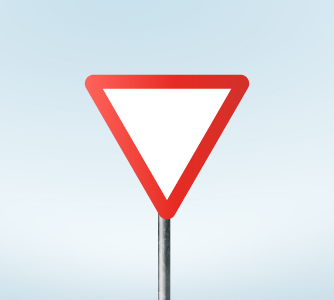
-
Stop Sign
Come to a complete stop, check for vehicles, cyclists, and pedestrians in all directions, and only proceed when the intersection is fully safe and clear.
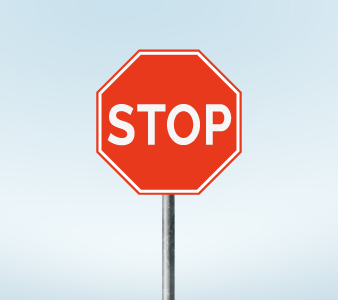
-
Speed Limit Sign
This number is the maximum legal speed for current conditions; reduce further for traffic, weather, or road hazards to maintain control and a safe stopping distance.
-
No Entry Sign
Do not enter this roadway from this direction; it’s one-way or restricted access, and driving past this sign creates a dangerous conflict with oncoming traffic.
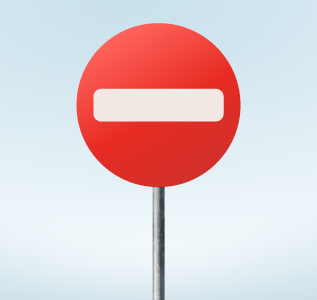
-
One Way Sign
Traffic flows in a single direction on this street; travel only the indicated way and plan turns accordingly to avoid illegal, unsafe, or confusing maneuvers.
-
Keep Left Sign
Pass hazards or medians on the left and travel in the left lane unless overtaking or turning right, maintaining orderly flow and safer separation from oncoming traffic.
-
No U-turn Sign
Making a turn to travel back the opposite direction is prohibited at this location; continue ahead to a signed, safe, and legal turning point instead.
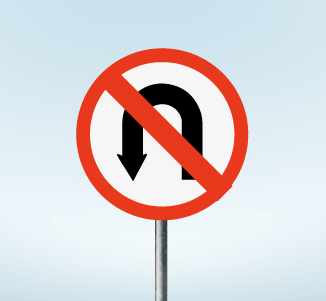
-
No Right Turn Sign
You must not turn right at this intersection or driveway; choose a different route or the next legal turn to maintain safety and traffic flow.
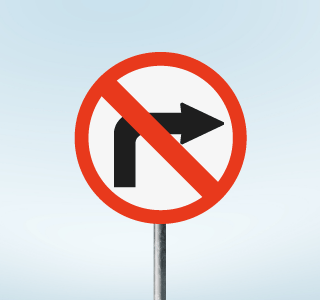
-
No Left Turn Sign
Left turns are prohibited here due to safety or traffic management; proceed straight or make an alternative, legal turn where signage permits a safer movement.
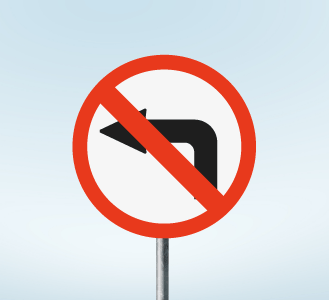
-
No Parking Sign
You must not stop or park along this section except for emergencies; keeping it clear protects visibility, access, and consistent traffic movement.
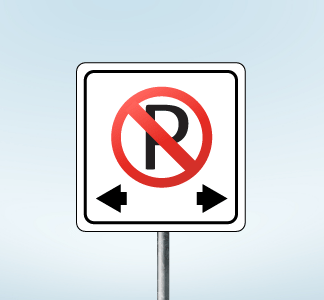
Warning signs (hazards ahead)
Warning signs highlight upcoming hazards or road changes so you can slow, look, and prepare; they’re typically yellow diamonds with black symbols.
-
Roundabout Ahead Sign
A roundabout is approaching; reduce speed, prepare to give way to traffic already circulating from the right, choose the correct lane, and signal appropriately before exiting.
-
Merging Traffic Sign
Lanes are joining; match speed with the adjacent flow, indicate early, and merge smoothly into a safe gap without braking sharply or forcing others to react.
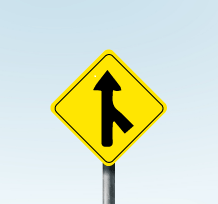
-
Lane Ends Sign
Your lane will terminate ahead; shoulder-check, indicate, and move into the continuing lane early, keeping a steady speed to avoid last-second, risky lane changes.
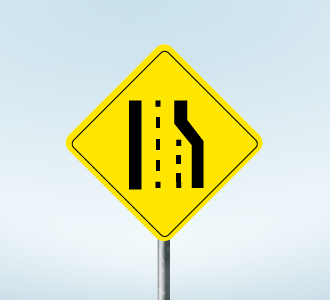
-
Crossroad Ahead Sign
A four-way intersection is coming; reduce speed, scan for cross traffic, and be ready for turning vehicles, signals, or give-way requirements affecting your path.
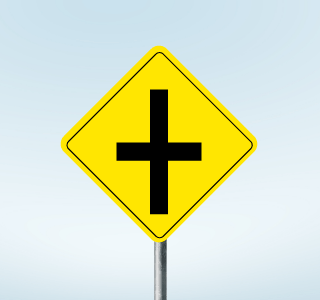
-
T-Intersection Ahead Sign
The road you’re on ends; you must turn left or right. Slow down early, check both directions, and prepare for give-way or stop control.
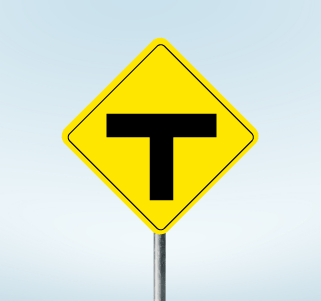
-
Winding Road Sign
Sharp or multiple bends ahead; lower speed, set up proper lane position, steer smoothly, and avoid harsh braking while cornering to maintain traction and control.
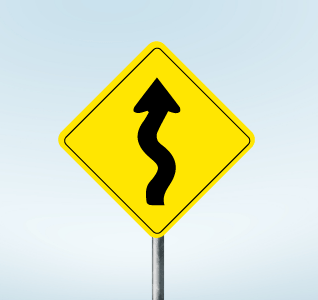
-
Road Narrows Sign
The carriageway becomes narrower; reduce speed, keep a central lane position, and allow extra space for oncoming vehicles, cyclists, or roadside hazards.
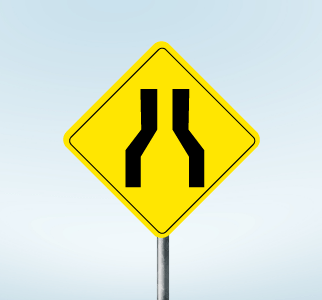
-
Pedestrians Ahead Sign
People may be crossing or walking near the roadway; slow down, watch verges and crossings, and be ready to stop, especially near schools or busier areas.
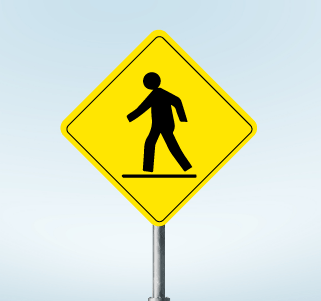
-
Slippery When Wet Sign
Reduced grip in rain or on damp surfaces; slow down, brake gently, and avoid sudden steering or acceleration to prevent skidding and loss of control.
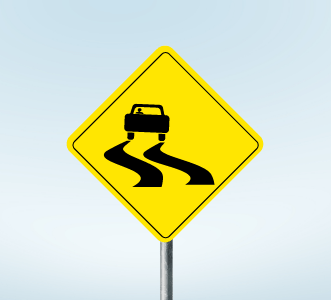
-
Traffic Signals Ahead Sign
Signalised intersection approaching; adjust speed, prepare for possible red, and maintain a safe following distance to avoid sudden stops or rear-end collisions.
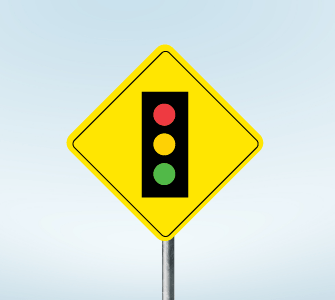
Information signs (guide signs)
Information signs provide directions, routes, and services to help navigation; green is often used for routes, blue for facilities, and brown for tourist sites.
-
Exit Sign
This is a designated off-ramp from a motorway or major road; signal early, reduce speed appropriately, and follow directional signs for your intended destination.
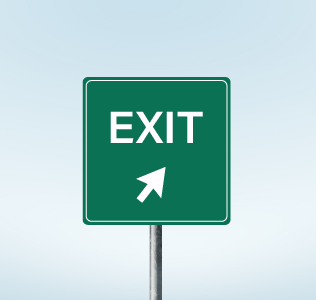
-
Detour Sign
The usual route is closed or restricted; follow the signed alternative path, watch for temporary hazards, and anticipate changed traffic patterns or reduced speeds.
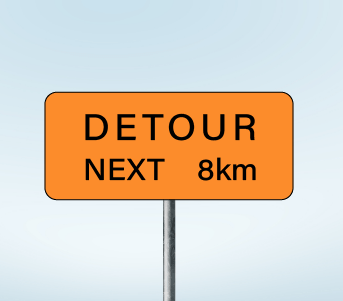
-
Freeway/Motorway Entrance Sign
Controlled-access road begins; accelerate on the entry ramp, match traffic speed, indicate, and merge smoothly into a safe gap without stopping on the ramp.
-
Hospital Sign
Medical facility nearby; expect ambulances and emergency vehicles. Keep entrances clear, obey parking rules, and give priority when sirens or flashing lights approach.
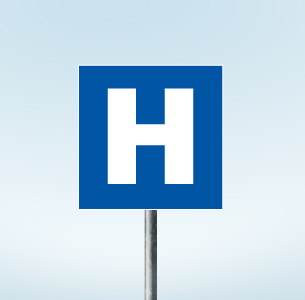
-
Fuel Station Sign
Fuel and basic vehicle services available; use signed access, reduce speed within forecourt areas, and re-enter traffic carefully with proper indication.
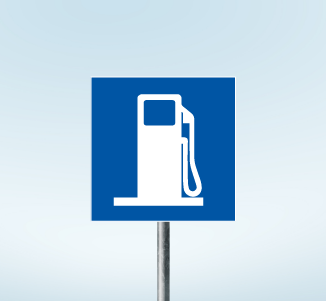
-
Airport Sign
Indicates an airport or aerodrome nearby; follow the directional signs for terminals, parking, and pick-up areas, and expect higher traffic volumes and occasional low-flying aircraft.
